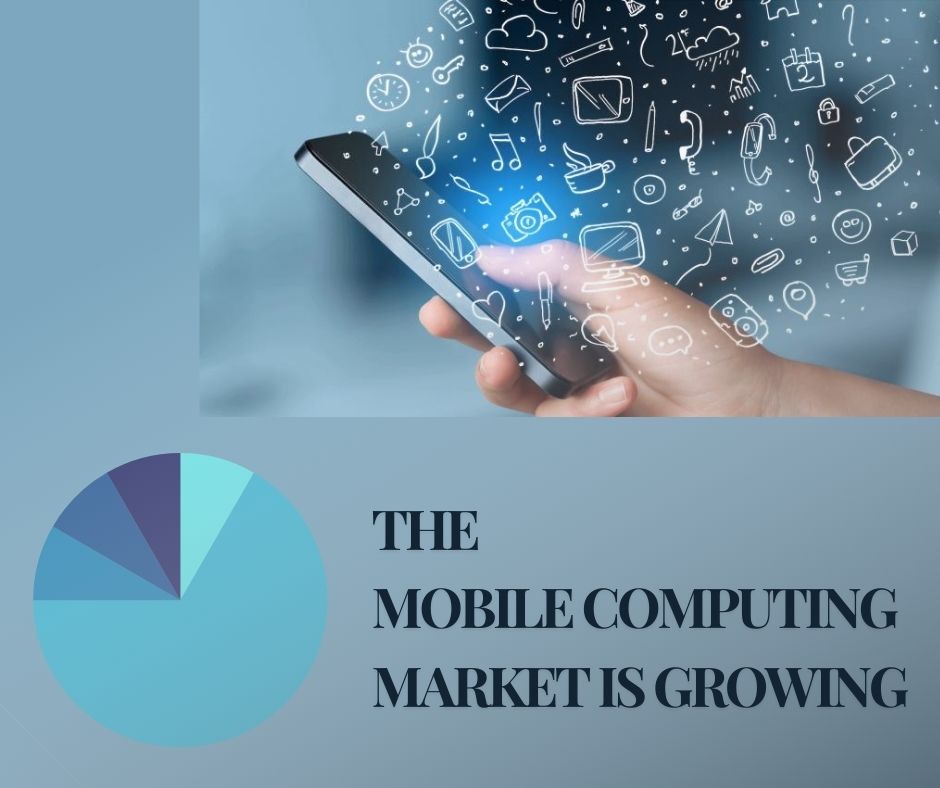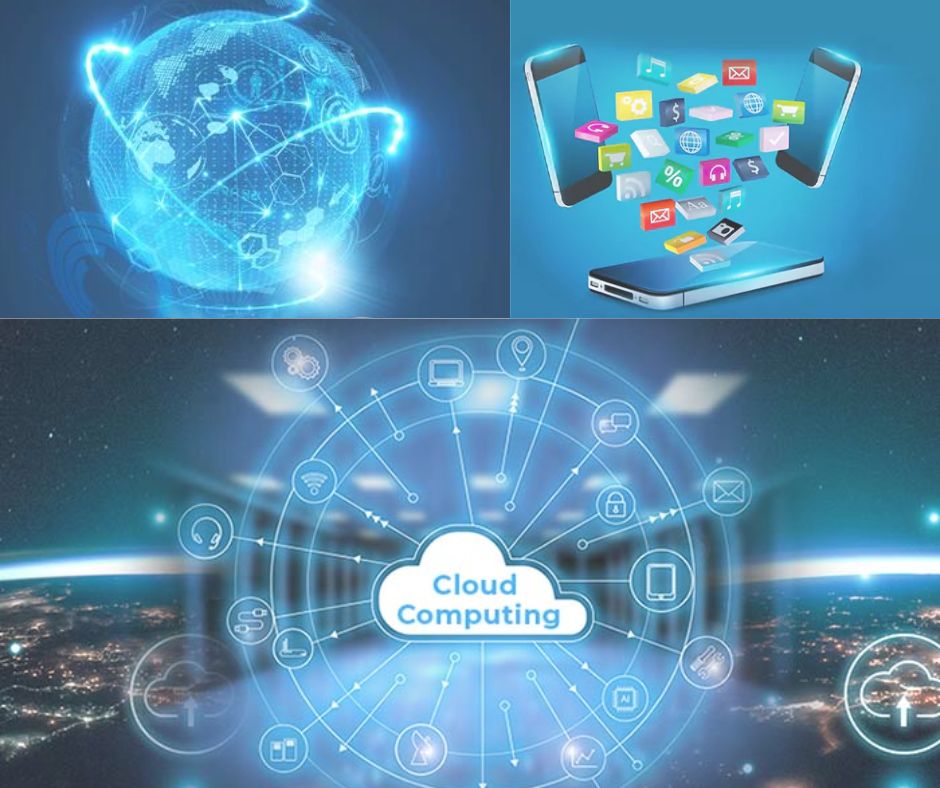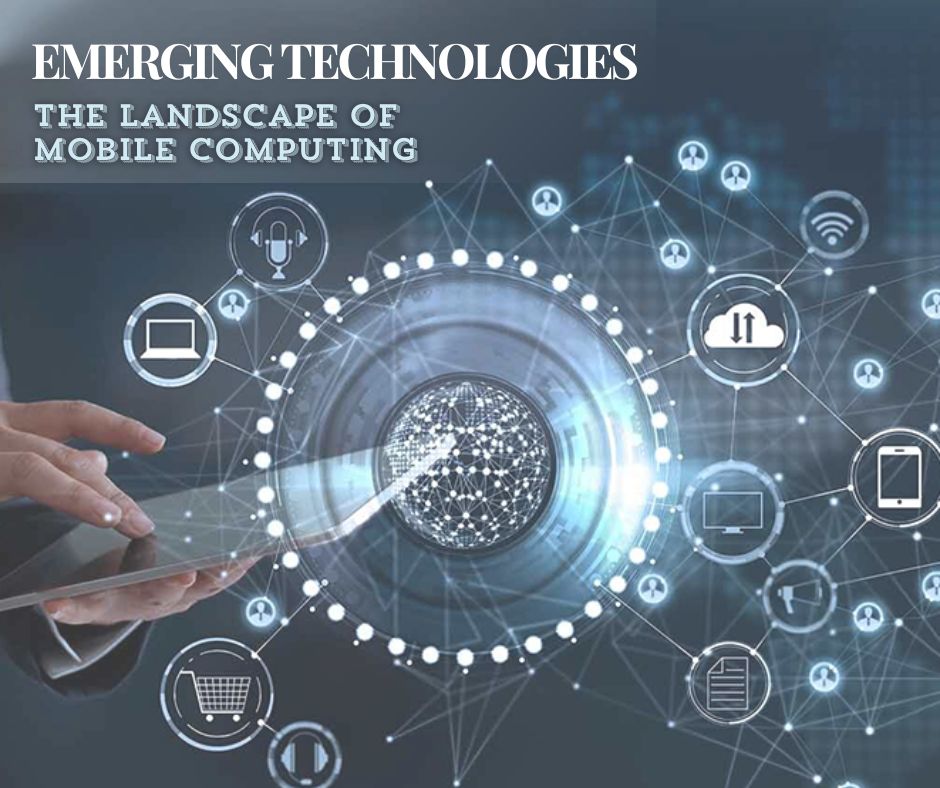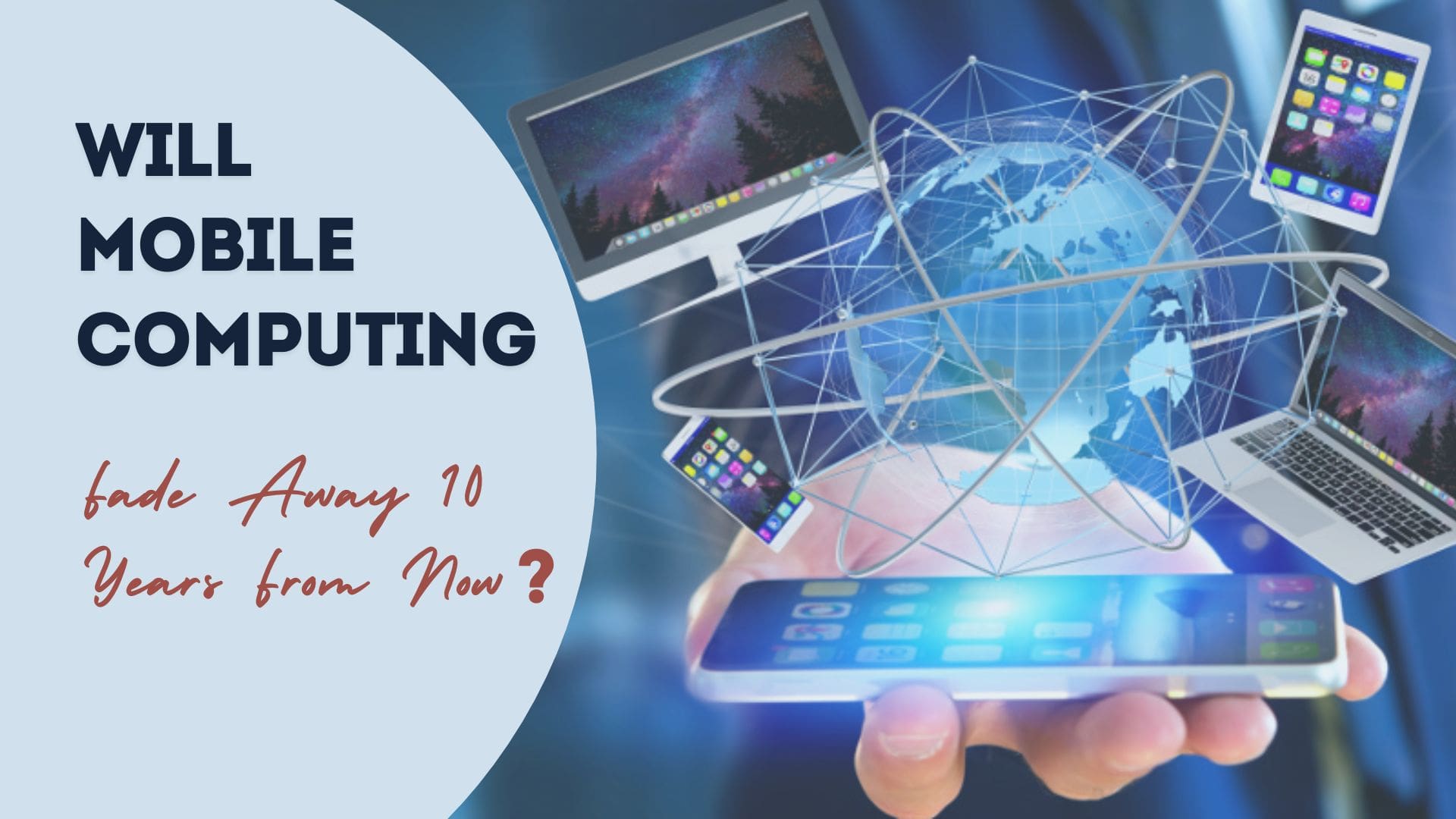The world of mobile computing is quite intriguing. This technology has profoundly transformed how we interact with the digital realm. But one thing that puzzles us as IT students is – “Will mobile computing fade away in the next decade?”
Mobile computing is essentially computing done on mobile devices like smartphones and tablets. Over the next decade, its landscape is poised for dramatic shifts, influenced by emerging technologies, changing consumer behaviours, and technological convergences. As we stand on the brink of advancements in wearables, the Internet of Things (IoT), and other transformative technologies, we are here to discuss whether mobile computing will merely evolve or gradually lose its prevalence to newer forms of digital interaction.
So, let’s begin.
Current Landscape of Mobile Computing (2024)

Since the first smartphone was unveiled in 2007, mobile technology has come a long way. Over the past seventeen years, mobile computing has reshaped how we communicate and access information and has become integral in sectors like education, healthcare, and business.
In 2024, the mobile computing market has continued its expansive growth, influenced by the integration of emerging technologies and an ever-increasing user base across the globe.
Here are some vital statistics to chew upon:
- Market Size: Estimated at USD 303.5 billion in 2023
- Projected Growth: Expected to reach USD 428.12 billion by 2033, growing at a CAGR of 3.5%
User Demographics and Device Insights
Mobile computing devices encompass smartphones, tablets, wearable devices, and more recently, extended IoT devices which blend seamlessly into the fabric of daily life. Each device type caters to different user needs, from basic communication to complex computational tasks previously reserved for desktop setups.
Here’s a table to illustrate the robust growth trajectory of the mobile computing market over a decade – highlighting significant investment and development opportunities within the sector:
Table: Mobile Computing Market Value and Growth Projections
| Year | Market Value (USD Billion) | Projected Growth |
| 2023 | 303.502 | – |
| 2024 | 315.879 | – |
| 2025 | 328.762 | – |
| 2033 | 428.120 | 3.5% CAGR |
Key Drivers of Mobile Computing

Continuous technological advancements have transformed the landscape of mobile computing. Innovations such as faster processors, improved battery life, and enhanced display technologies have significantly boosted the functionality of mobile devices, making them powerful enough to perform tasks previously reserved for desktops.
The Crucial Role of Mobile Applications and Cloud Computing
Mobile applications and cloud computing are pivotal in the expansion of mobile computing. Apps have transformed mobile phones into dynamic tools capable of performing a range of tasks from simple utilities to complex operational functions. Cloud computing complements this by enabling remote data storage and processing, which enhances the capabilities of mobile devices without burdening their hardware.
Impact of Increased Internet Accessibility and 5G Technology
The global adoption of 5G technology is set to revolutionise mobile computing by offering faster internet speeds and more reliable online connections, thus enabling seamless streaming and efficient cloud-based applications even on the go.
Global Adoption Rates of Mobile Computing Devices in 2024
- North America: Adoption rates in North America have reached approximately 78%, driven by widespread internet accessibility and the integration of mobile computing in the business and education sectors.
- Europe: Europe shows a robust adoption rate of around 72%, facilitated by supportive digital infrastructure policies and the high demand for mobile technology for both personal and professional use.
- Asia-Pacific: Leading the charge with an adoption rate of 85%, Asia-Pacific benefits from rapid urbanization and the proliferation of affordable mobile computing devices.
- Latin America: With a rate of 65%, Latin America has seen a significant increase due to improved connectivity and the expansion of mobile networks in remote areas.
- Middle East and Africa: Adoption rates are at 58%, steadily rising with the ongoing digital transformation initiatives and mobile-first approaches in several African nations.
These statistics underscore the critical role mobile computing plays in today’s digital ecosystem, facilitating access to information and services on a global scale. Also, it provides insights into how mobile computing continues to expand its footprint worldwide, driven by technological advancements and increased internet accessibility.
Challenges Facing Mobile Computing
The adoption of mobile computing is reshaping various sectors by introducing technologies that increase connectivity and functionality. However, this shift faces several challenges:
- Device Dependency and Security Concerns: As reliance on mobile devices intensifies, so do the security risks. Mobile computing devices are vulnerable to breaches, data loss, and unauthorized access, raising significant concerns about user privacy and data security.
- Hardware Limitations: Despite technological advancements, mobile devices still face constraints like limited battery life and screen size. These limitations restrict the usability of these devices for more intensive computing tasks.
- Environmental Impact: The rapid rate of device turnover in the mobile computing industry contributes to environmental issues. The production and disposal of mobile devices generate significant electronic waste, which poses disposal challenges and environmental hazards.
By addressing these challenges, the mobile computing industry can ensure sustainable growth and enhanced security, catering effectively to the evolving needs of modern users.
Emerging Technologies That Could Shape the Future

Four key technologies poised to transform the landscape of mobile computing are:
- Internet of Things (IoT): The convergence of IoT with mobile devices is enabling smarter, more connected environments. Mobile devices act as a hub for a myriad of IoT applications, from home automation to smart health devices, enhancing the utility and functionality of portable technology.
- Wearable Technology: Developments in wearable technology continue to expand the boundaries of mobile computing. Devices like smartwatches and fitness trackers not only collect personal data but also offer on-the-go computing power, blending seamlessly with mobile phones to provide a holistic view of our digital and physical lives.
- AI and Machine Learning: AI and machine learning are integral to the evolution of mobile computing, making devices smarter and more adaptive. These technologies enhance mobile capabilities in image recognition, natural language processing, and predictive analytics, thus enriching user interactions and personalization.
- New Device Forms: Innovations in device form factors, such as foldable phones and AR glasses, are creating new opportunities for mobile computing. Foldables offer the portability of a smartphone with the enhanced functionality of a larger screen, while AR glasses merge real-world views with digital overlays, opening avenues for immersive mobile experiences.
These technologies are not just enhancing mobile computing; they are redefining it. As these technologies continue to evolve, they promise to expand the capabilities of mobile devices far beyond what we currently envision.
Mobile Computing vs. Traditional PC: A Shifting Paradigm
Mobile computing devices, including smartphones and tablets, are increasingly favoured over traditional PCs due to their portability and advanced functionalities. While PCs offer robust computing power and larger screens suitable for intensive tasks, mobile devices provide greater flexibility and are increasingly capable of performing many of the same functions.
The market has seen a significant shift with mobile device sales surpassing those of PCs. This trend reflects the changing consumer preference for more portable and accessible computing solutions.
Different age groups and professional demographics show varying preferences for devices. Younger users lean heavily towards mobile devices for social media and entertainment, whereas older demographics might still prefer PCs for work-related tasks due to the familiarity and screen size.
Table: Survey Data on Device Preference for Various Tasks
| Task | PC Use (%) | Mobile Use (%) |
| Work | 60 | 40 |
| Entertainment | 30 | 70 |
| Communication | 25 | 75 |
This table highlights a clear preference for mobile devices in entertainment and communication, while PCs remain important for professional tasks.
The shift from traditional PCs to mobile computing reflects broader technological trends and changing consumer needs. Mobile devices are not only preferred for their convenience but are increasingly capable of performing complex tasks, making them central to both personal and professional activities. As technology continues to evolve, this trend is expected to strengthen, further integrating mobile computing into daily life.
Conclusion
As emerging technologies continue to reshape the digital landscape, the future of mobile computing looks vibrant and indispensable, rather than facing obsolescence. Over the next decade, advancements in wearables, IoT, and new device forms are likely to further integrate mobile computing into everyday life, signalling evolution rather than a fadeaway.





